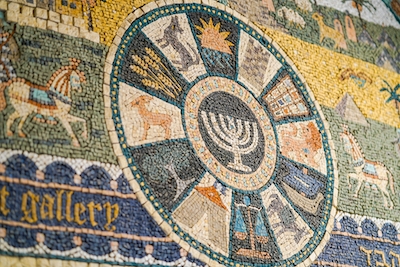In preparation for Passover, the spring festival of freedom that commemorates the Exodus from Egypt, the Torah prescribes that all Jews rid their homes of hametz, leavened food made from five forbidden grains. After the home has been thoroughly cleaned, the last of the hametz is sought out and eradicated in a pair of rituals called bedikat hametz (searching for hametz) and biur hametz (burning/destroying hametz). Bedikat Hametz takes place on the night before Passover unless this happens to be a Friday night, in which case it is done earlier in deference to Shabbat. Biur hametz is done the following morning.
How to Perform Bedikat Hametz
To perform a traditional bedikat hametz you will need:
- A candle or flashlight
- A feather
- A wooden spoon
- A paper bag
- The text of the blessings
The search for hametz is done after nightfall on the 14th of Nisan, the night before the Passover seder. Before starting the search, it is traditional to recite the following blessing:
בָּרוּךְ אַתָּה יהוה אֱלֹהֵינוּ מֶלֶךְ הָעוֹלָם אֲשֶׁר קִדְּשָׁנוּ בְּמִצְוֹתָיו וְצִוָּנוּ עַל בִּיעוּר חָמֵץ

Help us keep Jewish knowledge accessible to millions of people around the world.
Your donation to My Jewish Learning fuels endless journeys of Jewish discovery. With your help, My Jewish Learning can continue to provide nonstop opportunities for learning, connection and growth.
Baruch atah Adonai, Eloheinu melech ha’olam, asher kid’shanu b’mitzvotav v’tzivanu al biur hametz.
Blessed are You, Lord our God, ruler of the universe, who has sanctified us with His commandments and commanded us concerning the eradication of hametz.
Traditionally, one uses a candle to search corners of the home, high and low. When crumbs of hametz are discovered, they are swept into a wooden spoon using a feather. Collected crumbs are set aside in the paper bag, or some other receptacle, to be burned the following morning. So that this blessing is not said in vain, small pieces of hametz are often intentionally hidden around the house.
Once the search for hametz has been completed, and one is confident there is no more hametz to be found, a declaration is recited to nullify any hametz that might have been overlooked:
כָּל חֲמִירָא וַחֲמִיעָא דְאִיכָּא בִרְשׁוּתִי דְלָא חֲמִתֵּיהּ וּדְלָא בִעַרְתֵּיהּ וּדְלָא יְדַעְנָא לֵיהּ לִבָּטֵל וְלֶהֱוֵי הֶפְקֵר כְּעַפְרָא דְאַרְעָא
Kol chamira v’chami’a d’ika virshuti d’la chamitay u’dla vi’artay u’dla y’dana lay livateil v’lehevay hefker k’afra d’ara.
All hametz in my possession, whether I have seen it or not, whether I have removed it or not, shall be nullified and ownerless, like the dust of the earth.
The Next Morning: Burning the Hametz (Biur Hametz)
The following morning, which is the morning of the Passover seder, the crumbs of hametz collected the previous night are burned by mid-morning (check with your local rabbi for the exact time). Many synagogues hold a communal bonfire for this purpose. A final nullification statement, similar to the one made the previous night, is recited, ensuring that all hametz is removed in both a physical and legal sense.
כָּל חֲמִירָא וַחֲמִיעָא דְּאִכָּא בִרְשׁוּתִי דַּחֲזִתֵּהּ וּדְלָא חֲזִתֵּהּ דַּחֲמִתֵּהּ וּדְלָא חֲמִתֵּהּ דְּבִעַרְתֵּהּ וּדְלָא בִעַרְתֵּהּ לִבָּטֵל וְלהֱוֵי הפְקֵר כְּעַפְרָא דְאַרְעָא
Kol chamira v’chamiya d’ika virshuti d’chazitay u’dla chazitay d’chamitay u’dla chamitay d’vi’artay u’dla vi’artay livateil v’lehevay k’afar d’ara.
All hametz in my possession, whether I have seen it or not, whether I have removed it or not, whether I have destroyed it or not, is hereby nullified and ownerless as the dust of the earth.



